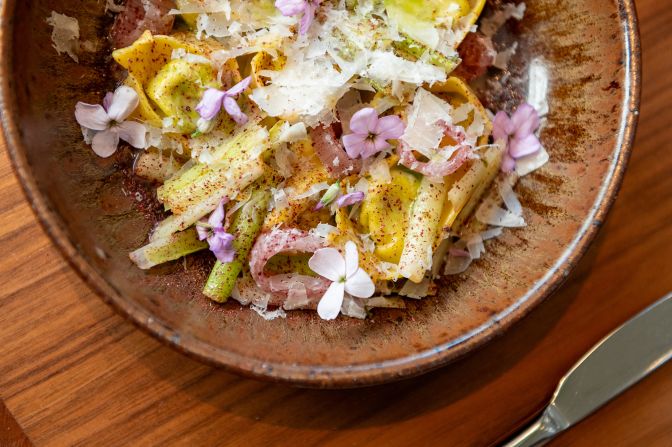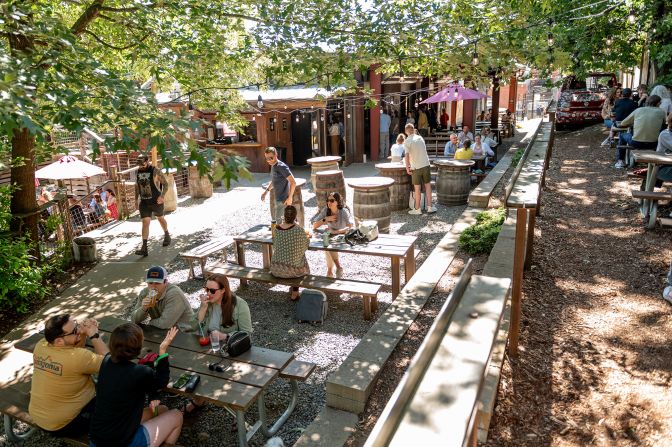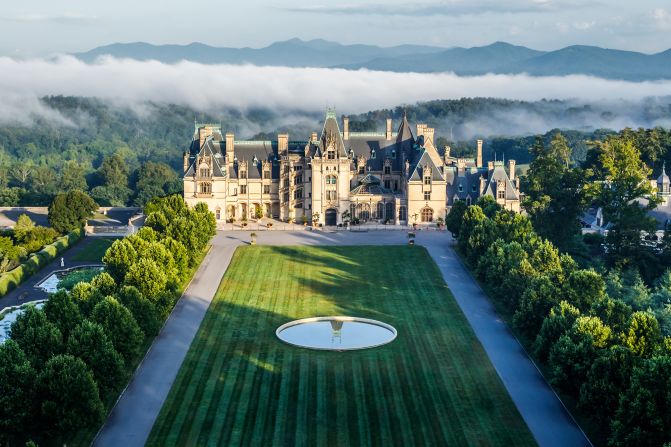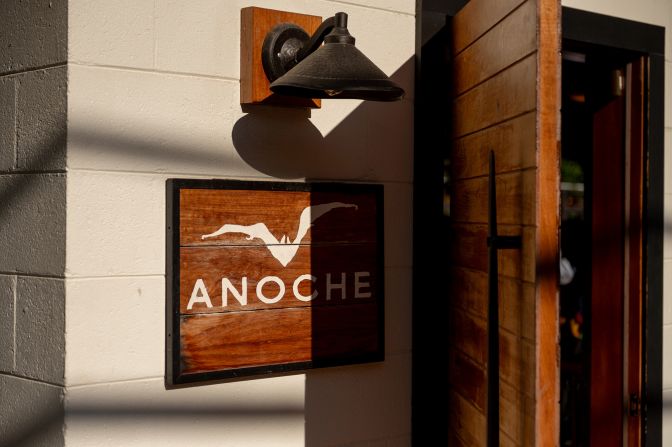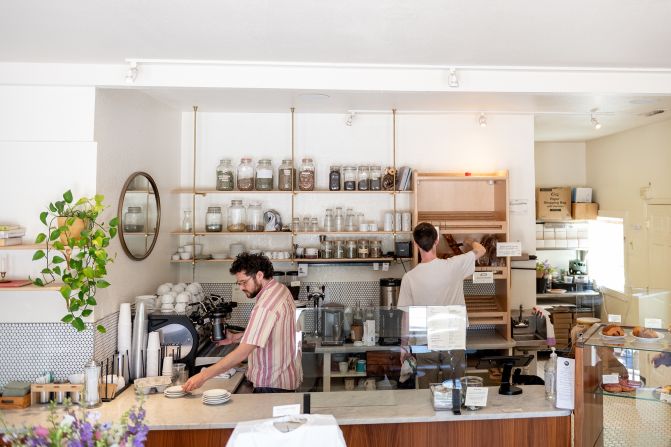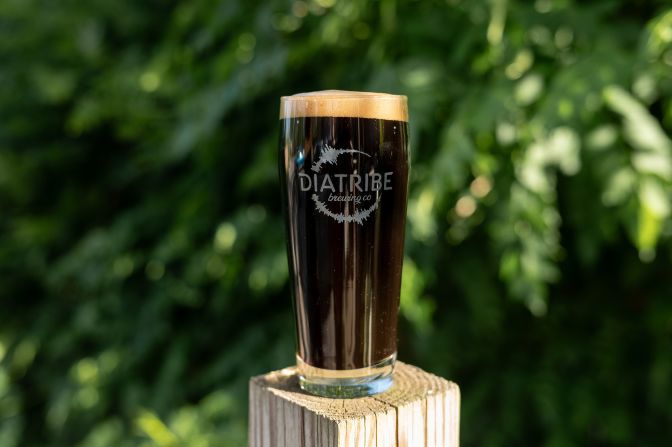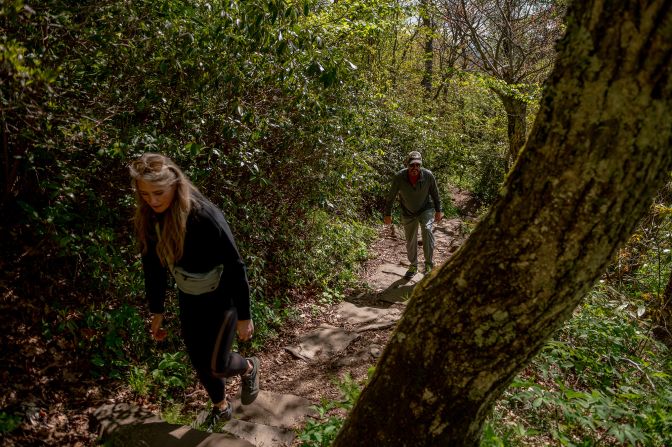
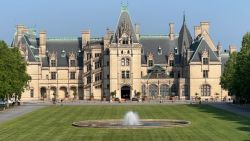



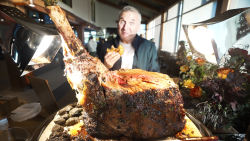
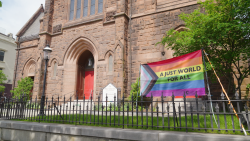



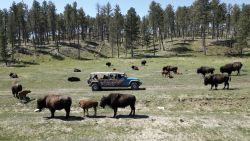



Artists carrying rods laden with glowing molten glass work in a hot shop on Roberts Street. Around the corner on Clingman Avenue, ceramics classes buzz with activity. Up the block, bartenders shake mezcal and tequila cocktails in a cozy neighborhood hangout.
Asheville’s River Arts District (RAD) is humming with creativity on a cool Thursday evening, powerful evidence that this mountain town — ravaged by Hurricane Helene in late September — is returning to what it does best.
The recovery is still a work in progress, given the deadly storm’s massive impact on people across Western North Carolina and its devastation of two popular Asheville neighborhoods — the RAD (“rad”), as locals call it, and nearby Biltmore Village.
MORE AMERICA'S BEST TOWNS TO VISIT 2025
But everything that’s helped make Asheville a popular tourist destination for well over a century is still very much here to enjoy. You’ll find Blue Ridge Mountain scenery, a vibrant downtown, eclectic neighborhoods, the grand Biltmore Estate, an impressive food and beverage scene, great hiking and an all-around creative culture that’s long drawn artists and craftspeople.
The city and its many small businesses are ready for your visit.
“I think the first thing is to just bring love — and the second is wallets,” said Jeffrey Burroughs, president of the River Arts District Artists (RADA), who is working with numerous groups to steer the RAD’s rebirth and find new spaces for hundreds of artists whose studios were flooded by the swollen French Broad River during Helene.
Burroughs said locals are hopeful that travelers will arrive in large numbers this summer and beyond. Travel and tourism make up 20% of the county’s GDP, and visitors spent nearly $3 billion in 2023.
“Each week we are seeing more and more visitors, and there is a clear sense of creative resilience and renewal,” said Burroughs, a jewelry designer who took refuge here during the pandemic and ultimately made the city home after decades in New York City.
“It’s just such a magical place … the earth vibrates differently here,” Burroughs said. “And the people are wonderful.”
Here are some key areas to explore.
A taste of Asheville
America's Best Towns to Visit 2025: Asheville
Much of the city shows few obvious signs of Helene. Located safely on high ground, downtown Asheville features streets lined with boutiques, galleries, restaurants and handsome Art Deco buildings, reminders of a 1920s economic boom. On Friday nights, the pulsing energy of the weekly drum circle draws people together in Pritchard Park.
Return visitors will be pleased to find acclaimed dining stalwarts like Katie Button’s Cúrate open for business. They’ll also notice the absence of restaurants that have closed in the wake of the storm, including Rhubarb, Laughing Seed Café and Bodega by Cúrate, which will now serve as an event space. But new hotels, including The Flat Iron in a wedge-shaped 1926 skyscraper, highlight the city’s recent boom as a destination.
Inside the hotel, which opened in May 2024, the ground-floor restaurant Luminosa features “modern-Appalachian meets Italian” cuisine. A recent zesty cappellacci dish showcased ramps, the fleeting springtime allium beloved by chefs and foragers. Up top, there’s a rooftop bar with Blue Ridge views, and down below, a basement speakeasy.
Nearby, the unexpected Asheville Pinball Museum offers hours of entertainment with unlimited access to 40 pinball machines and 40 classic video games for $17.
The city is brimming with beverages — cider (and tinned fish) at Botanist and Barrel over on Broadway or beer at Dssolvr on Lexington Avenue.
Just south of downtown, the South Slope brewing district is evidence of Asheville’s “beer city” bona fides. This area alone is home to nearly a dozen breweries, including Burial Beer Co.’s original facility — its “little dive in the alley” with two bars and indoor and outdoor spaces.
ESSENTIAL ASHEVILLE
- EAT: Baked goods at OWL Bakery
- DRINK: Noble Cider and beer all over town
- STAY: At The Radical or The Flat Iron Hotel
- SEE: The Biltmore Estate and the River Arts District
Music venue Eulogy is a newer addition to the Burial compound, and next door at Good Hot Fish, from chef and James Beard Award winner Ashleigh Shanti, sandwiches piled with piping hot fried catfish, buttermilk tartar sauce and fridge pickles live up to the petite restaurant’s name.
About two miles south of downtown, Asheville’s No. 1 attraction, the sprawling Biltmore Estate, was largely spared from Helene.
George Vanderbilt’s 250-room Biltmore House — a grand Gilded Age chateau and America’s largest home — first welcomed family and friends in 1895. By that time, Asheville’s reputation as a health resort was already well-established and the town’s popularity with summertime visitors had exploded with its 1880 rail connection.
Today, Biltmore regulars swear by behind-the-scenes offerings such as the “backstairs” tour. There’s a new farm-to-table experience and a new rooftop tour, and there are a range of offers for upcoming visits to the estate, which has hotels and cottages on the property.
While the estate was nearly undamaged, Historic Biltmore Village outside the grounds suffered catastrophic flooding from the Swannanoa and French Broad rivers, shuttering its stores and restaurants.
But rebirth is happening. The upscale Grand Bohemian Lodge reopened to guests in May, and Eda Rhyne Distilling Company’s tasting room is again serving up drinks featuring its Appalachian fernet and amaro.
The RAD renaissance
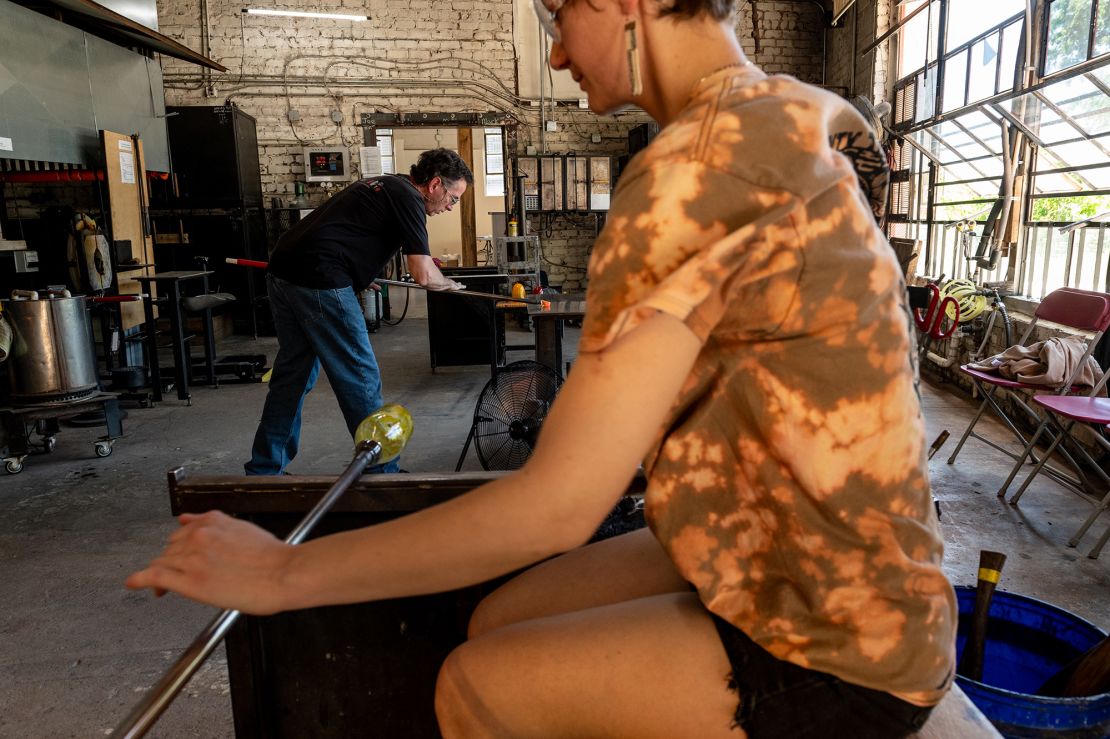
Southwest of downtown, the River Arts District has been home to a creative community since the 1980s, when artists started transforming old industrial buildings into studios.
While the lower part of the neighborhood was devastated by Helene, an upper section on higher ground largely escaped the floodwaters and is very much open for business — reflecting the resilience that’s evident all over town.
Asheville is “a more welcoming community than it’s ever been, and it’s a closer community than it’s ever been,” said Amy Michaelson Kelly, owner of The Radical, a graffiti-chic, art-centered hotel in the RAD that hosted first responders and reopened to guests in January.
“It’s been a really difficult time. And so I think people are really embracing joy in a different way, and so it’s a really fun place to be right now,” said Kelly.
You can stroll through the district, visiting galleries and studios. Prime hours are typically 11 a.m. to 5 p.m. later in the week and on weekends and there are monthly art strolls and other events.
On Clingman Avenue, the Odyssey Gallery showcases the creations of more than 20 ceramic artists, including whimsical teapots by Laura Peery. Next door, Odyssey ClayWorks hosts classes.
Up the block, Anoche serves agave spirit-based beverages in a tiny white cottage that spills out onto a spacious patio. The Grey Eagle across the street hosts a full calendar of live music and events.
Down on Artful Way, Burroughs’ space — Jeffrey, The Jewel of Asheville — is part of a line of storefronts showcasing innovative designs and handmade art. While Burroughs’ Asheville studio started along this street, other artists nearby were displaced by Helene. Among them is Leslie Rowland (who paints under the name L Rowland). She lost her space in the lower RAD to the storm and has opened up a new gallery on Artful Way called Joan Awake, which shows the work of about 10 female artists impacted by Helene.
On Roberts Street, the non-profit North Carolina Glass Center hosts classes in its hot shop and sells ethereal drinking glasses and other eye-catching items. (There’s also a new center 15 miles east of town in Black Mountain).
ButterPunk, a new bakery and cafe from pastry chefs Beth Kellerhals and Dana Amromin, opened in May on Depot Street after Helene floodwaters set its opening back by months.
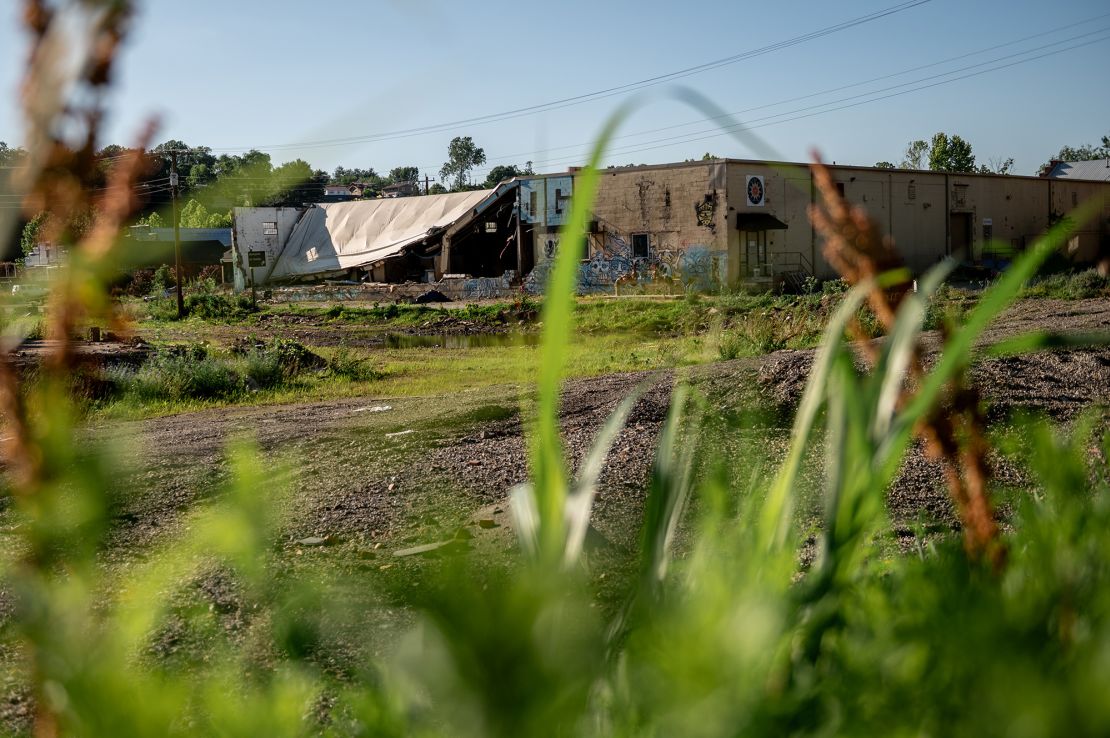
It’s the lower part of the RAD, along the banks of the French Broad River, that shows the scope of the storm’s destruction. Catastrophic flooding destroyed businesses and studio spaces, sweeping away artwork and displacing hundreds of artists.
Burroughs, who uses they/them pronouns, said they expect most of the lower RAD’s damaged studio complexes will be back in some capacity by the end of the year, and there’s discussion about future redevelopment of low-lying areas.
Art enthusiasts are encouraged to visit, “not just as tourists, but as supporters of a working art district that is still rebuilding,” Burroughs said. “Whether they are collecting, strolling, or simply being inspired, every visit helps move this story forward.”
Fuel for adventure in West Asheville
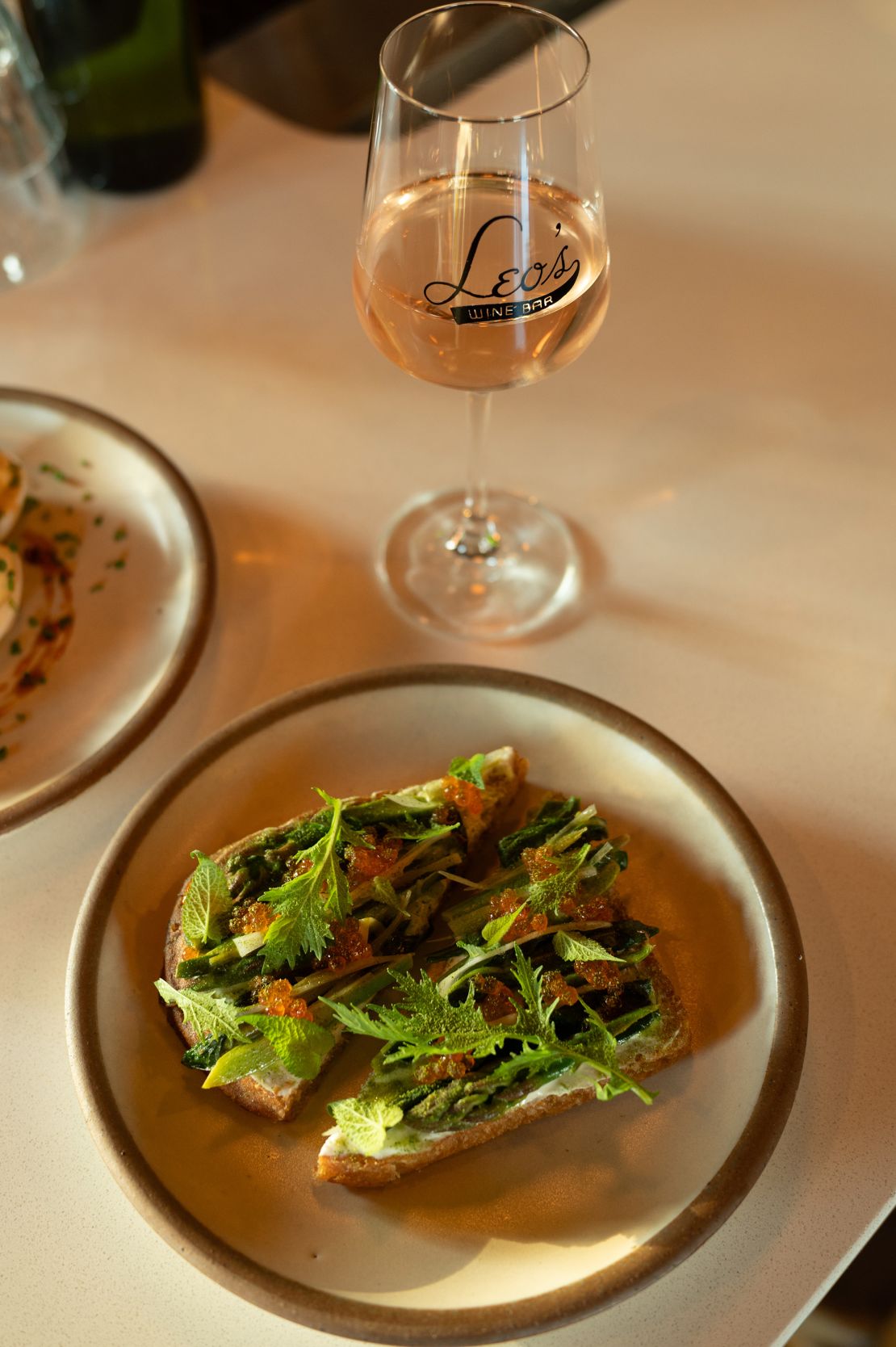
About a five-minute drive from the RAD, an impressive lineup of restaurants, bars, bakeries and more clustered along Haywood Road in West Asheville will satisfy pretty much any craving.
OWL Bakery, short for Old World Levain, offers a tantalizing selection of naturally leavened bread and European-inspired pastries. Founder Susannah Gebhart’s talents are evident in items such as the hearty porridge bread or savory Danishes featuring seasonal veggies and herbs.
Sunny Point Cafe is a favorite for hearty brunches, and nearby, bottle shop Local 604 is a good spot to stock up on regional beverages like Noble Cider and Pisgah Pale Ale to take home. Hi-fi listening bar Potential New Boyfriend serves wine and desserts.
Neng Jr’s, an 18-seat Filipinx restaurant, has earned a long list of national accolades for chef and owner Silver Iocovozzi’s Filipino dishes drawing on Appalachian ingredients.
Leo’s House of Thirst, from the same owners as longtime West Asheville favorite The Admiral, pairs its impressive wine list with a fresh, produce-forward menu. Across the street, Diatribe Brewing Co. serves up award-winning beers.
But you can only eat so many meals in a day, and Asheville’s glorious location calls for getting out into nature.
The surrounding scenery beckons
While segments of the stunning Blue Ridge Parkway near Asheville remain closed because of extensive damage from Helene, some stretches have reopened. They include a section close to the Folk Art Center and another near Mount Pisgah that offers sweeping vistas and great hikes, including the Graveyard Fields Loop Trail and the Mount Pisgah Trail.
Explore Asheville highlights some of the reopened sections, with helpful details and directions. The tourism organization suggests checking DriveNC for access updates.
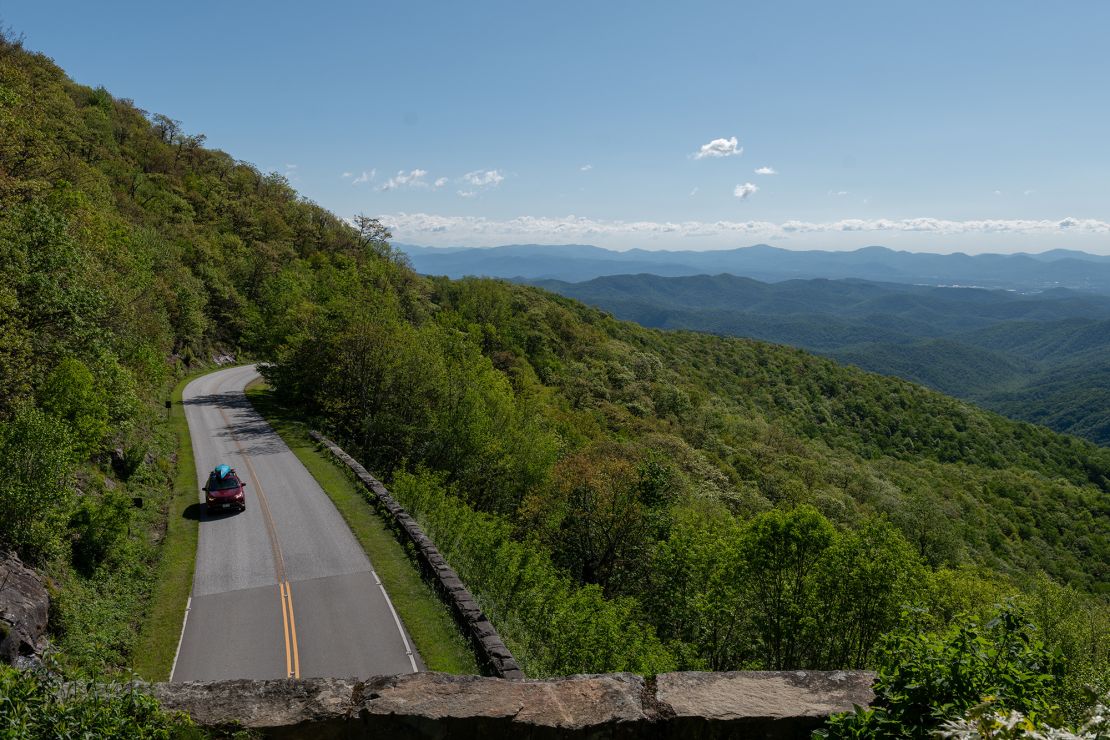
Beyond the parkway, there are plenty of hiking options across the region. And getting out and about means interacting with a constellation of smaller communities that have also struggled since the storm. Visit North Carolina has created an interactive map to show which towns are welcoming visitors — and those that aren’t ready yet.
About 20 minutes east of downtown Asheville, Black Mountain sits on high ground and sustained little damage. In the center of town, a new restaurant bears a name that resonates around here: Hell or High Water.
The new venture, next door to casual sister eatery Foothills Grange, showcases seasonal, locally sourced ingredients and mountain scenery from its airy upper dining room, bar and rooftop patio.
General manager Brad Childers, who worked at Grand Bohemian Lodge in Biltmore Village before floodwaters shut it down for months and left him out of work, said the storm’s aftermath has been incredibly tough on the restaurant industry.
But the attitude Hell or High Water owners Casey and Amanda McKissick had when they opened the restaurant in November appealed to him.
“I really enjoyed their view because instead of shutting down, they wanted to show the world that we’re opening up,” said Childers.
And that’s the message he has for visitors.
“Just get back up here, spend money. We’re open, we’re ready,” he said. “Everything is still gorgeous. These mountains are still here — they’re not going anywhere.”
Next town: Bend, Oregon is No. 4
This outdoor paradise vibrates with ‘go-play-all-day energy’


